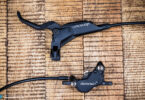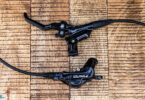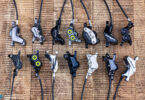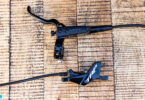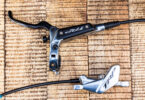If the next “Miss Switzerland” contest were about bikes and not girls, the SCOTT Genius Contessa 710 would earn a place in the finals. No other bike has attracted quite as much attention during its test period. But what is underneath those beautiful looks?
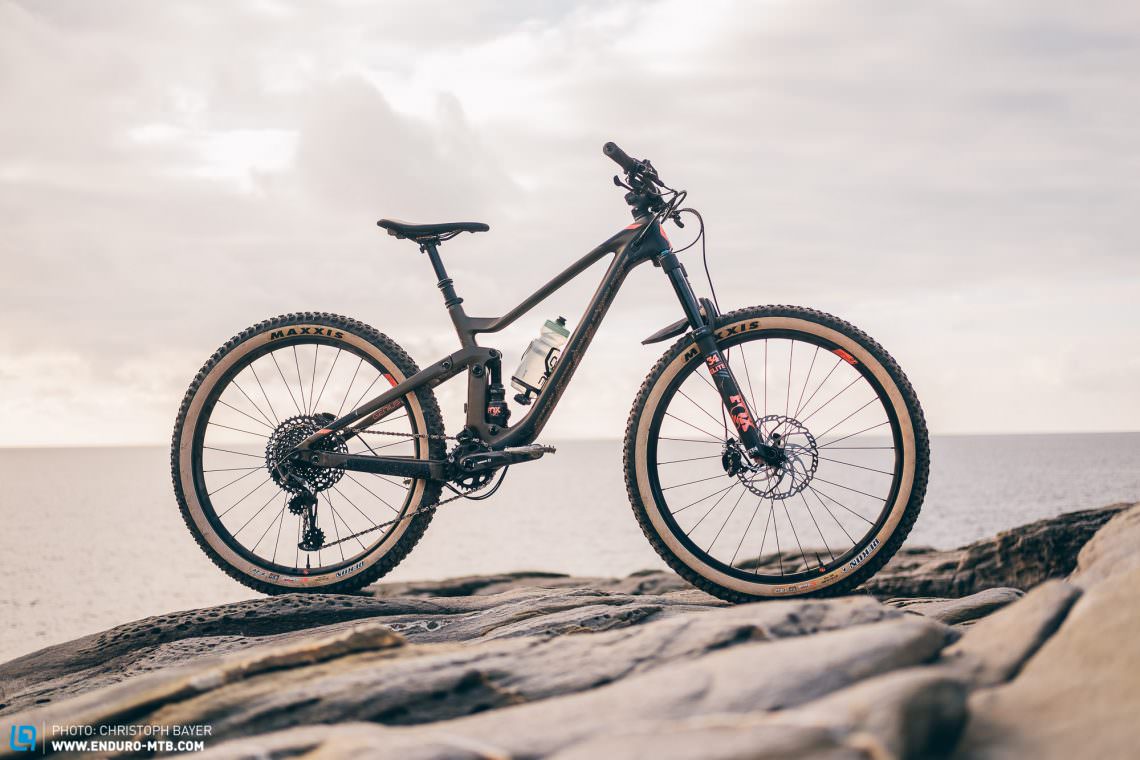
Being a model is a tough profession which requires a number of unique attributes – looking good is definitely one of them. If the SCOTT Genius Contessa 710 were a model, she would be stunning! With its discreet frame and elegant pink accented bronze-finish, SCOTT’s women-specific trail rig looks incredibly good. To top off the harmonious overall concept, SCOTT delivers the new Contessa with MAXXIS Rekon Skinwall tires, which make for a slender and very unique look.
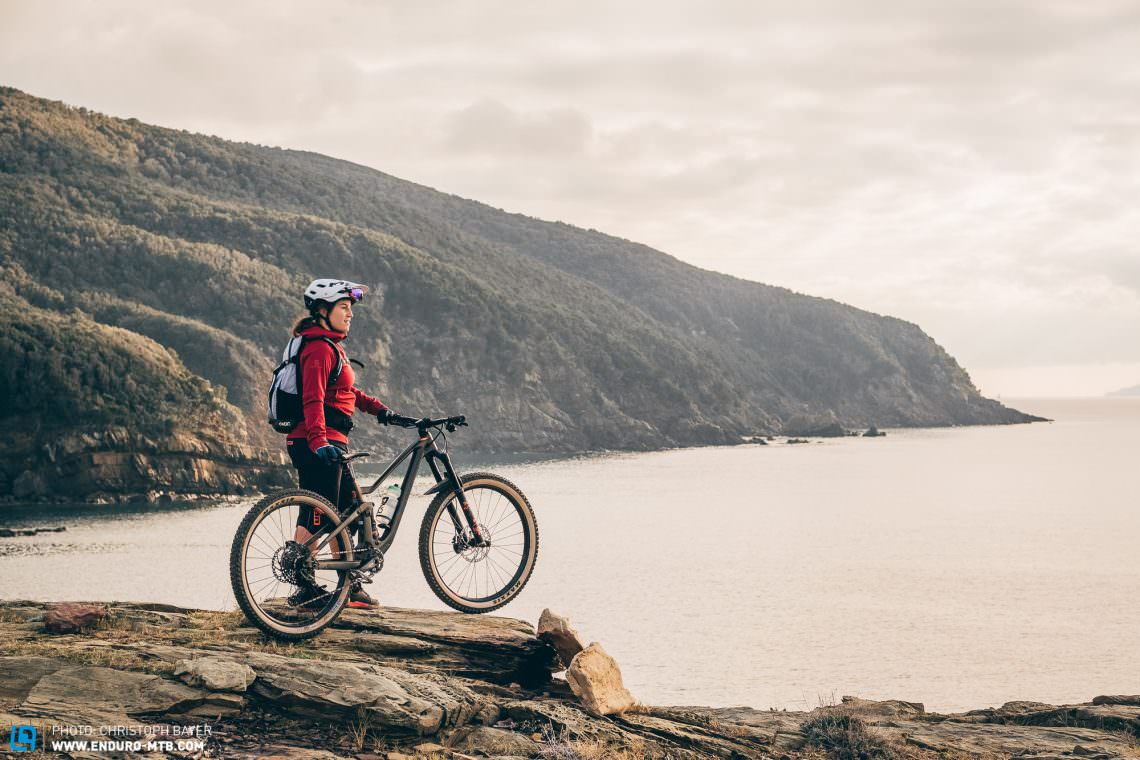
The comp card – what’s the Contessa really capable of?
A comp card is unforgiving. It lists the model’s basic stats regardless of her personality. Just cold, hard facts. On paper, the SCOTT Genius doesn’t look bad at all: 150 mm travel, a reasonable weight of 13.43 kg and harmonious geometry. However, on closer inspection, you’ll notice some inconsistencies. The 740 mm bars are narrower than J-Lo’s waist and the dropper with just 100 mm of travel (size S) doesn’t make much room for cool moves on the trail.
Fork FOX 34 Float Performance Elite 150 mm
Shock FOX NUDE TR EVOL150-100 mm Lockout
Brakes Shimano XT 203/180 mm
Drivetrain SRAM GX/XO1 Eagle 1×12
Seatpost FOX Transfer 100 mm (S) | 125 mm (M) | 150 mm (L)
Stem Syncros FL1.5
Handlebar Syncros FL1.5 740 mm
Wheels Syncros Revelstoke 2.0 27,5″
Tires Maxxis Rekon 2,8″
One of the great strengths of the bike is its versatility. The TwinLoc system lets you turn the Genius from an efficient climber to a powerful downhill machine at the push of a button. Furthermore, the flip-chip on the shock-mount allows you to run either 27.5″ or 29″ wheels, depending on what you want to do with your Genius.
In the spec we tested, the Contessa costs € 5,299 and features a number of popular, well-proven components. Shimano XT four-piston brakes, a SRAM GX/X01 Eagle groupset and FOX performance suspension, all topped off with a Syncros Revelstoke 2.0 wheelset – we can’t complain!
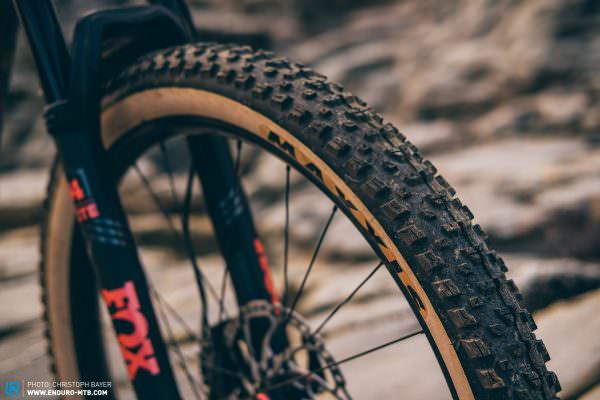
Like high heels, the MAXXIS Rekon tires might look great, but they aren’t exactly the right choice for rough terrain.
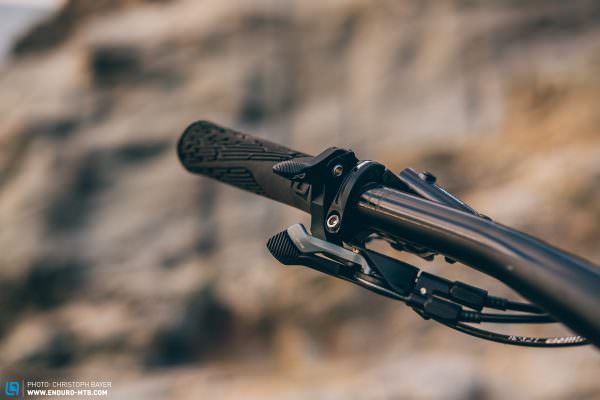
At first you’ll struggle to hit the right lever on the busy cockpit. The dropper-remote is hard to reach with small thumbs.
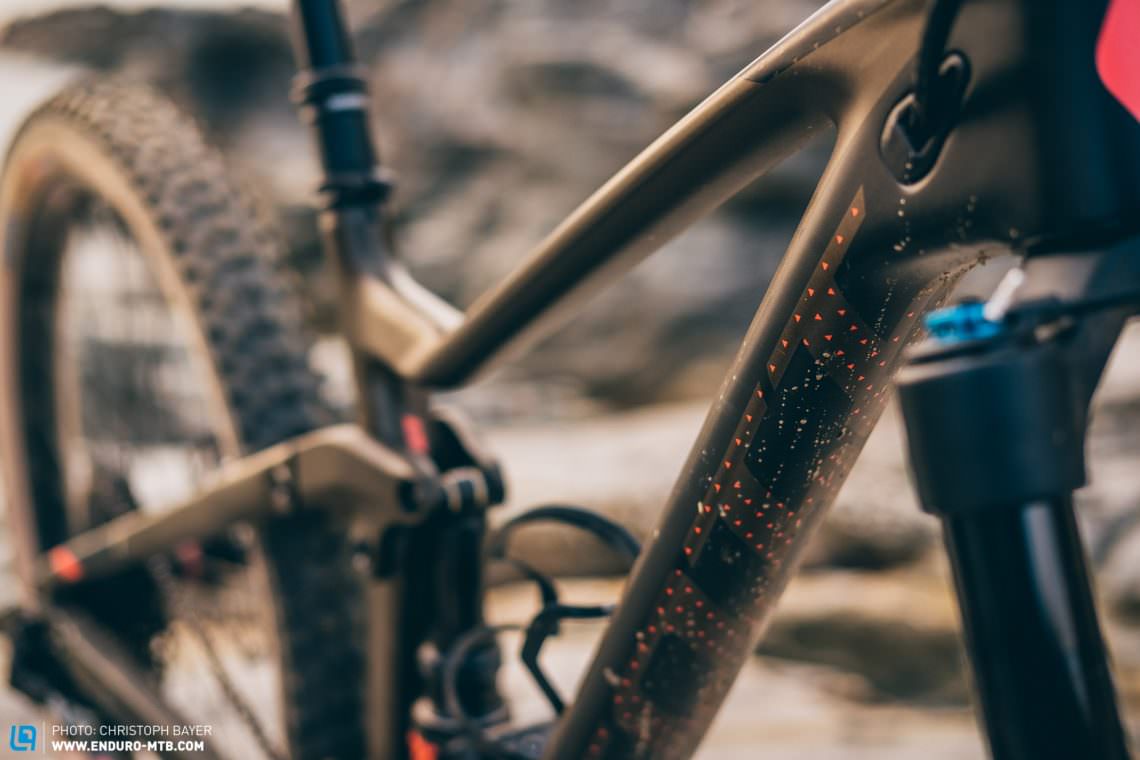
SCOTT understands that not all women are into pink, butterflies, flowers and purple. We think that the paint-finish of the Genius Contessa looks great!
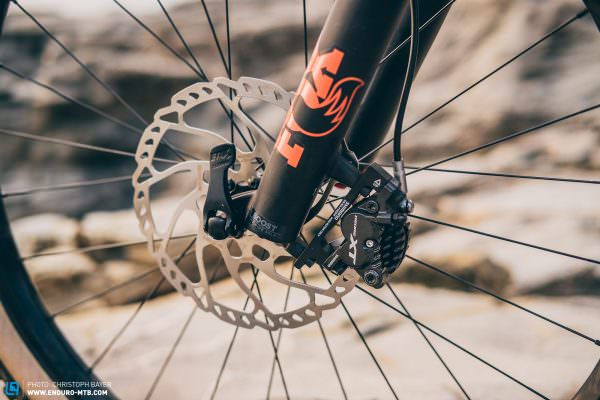
The four-piston Shimano XT brakes are powerful and deliver consistent performance. The snappy bite, however, makes for poor modulation.
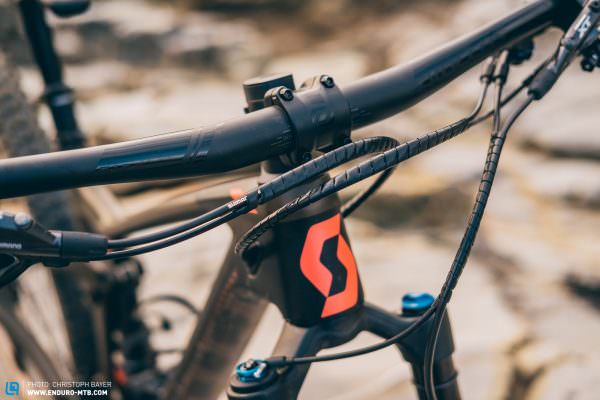
DWhat could potentially be a huge spaghetti-cable-chaos is nicely bundled together.
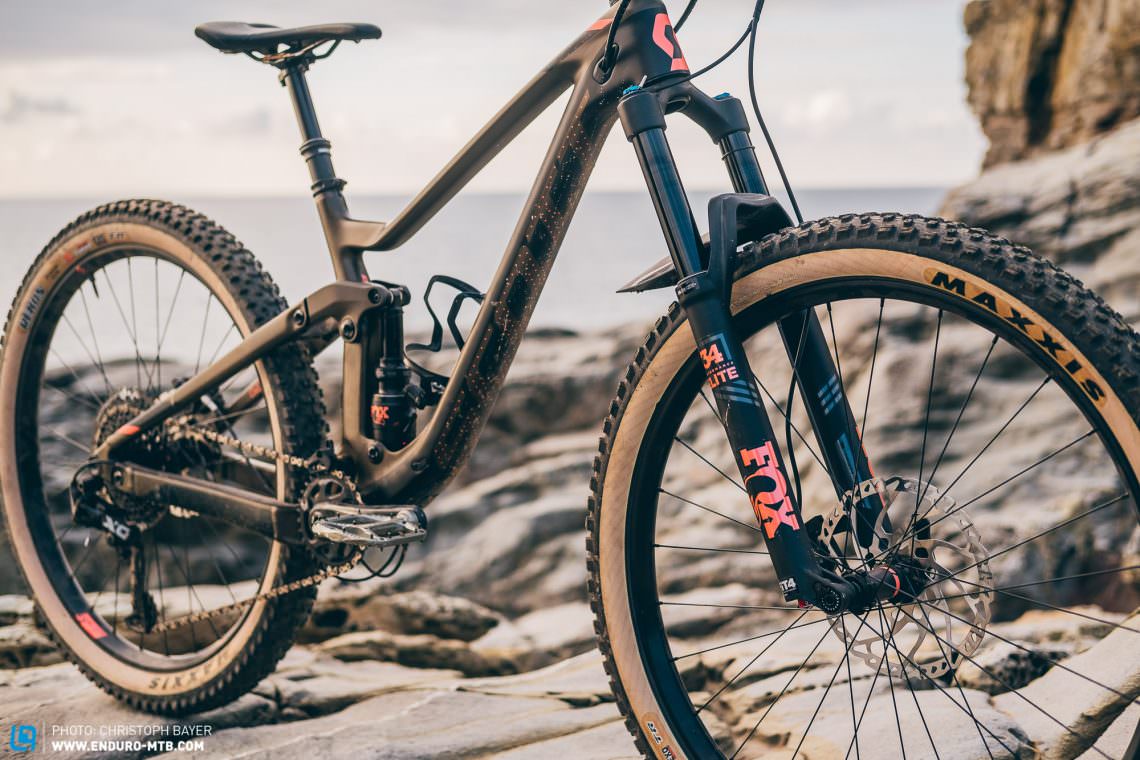
The FOX suspensions work sensitively and offer good pop.
| Size | S | M | L |
|---|---|---|---|
| Seat tube | 410 mm | 440 mm | 480 mm |
| Top tube | 568 mm | 601 mm | 632 mm |
| Head tube | 95 mm | 95 mm | 110 mm |
| Head angle | 65.0° | 65.0° | 65.0° |
| Seat angle | 75.0° | 75.0° | 75.0° |
| Chainstays | 436 mm | 436 mm | 436 mm |
| BB Drop | 340 mm | 340 mm | 340 mm |
| Wheelbase | 1,165 mm | 1,198 mm | 1,231 mm |
| Reach | 412 mm | 445 mm | 472 mm |
| Stack | 596 mm | 596 mm | 609 mm |
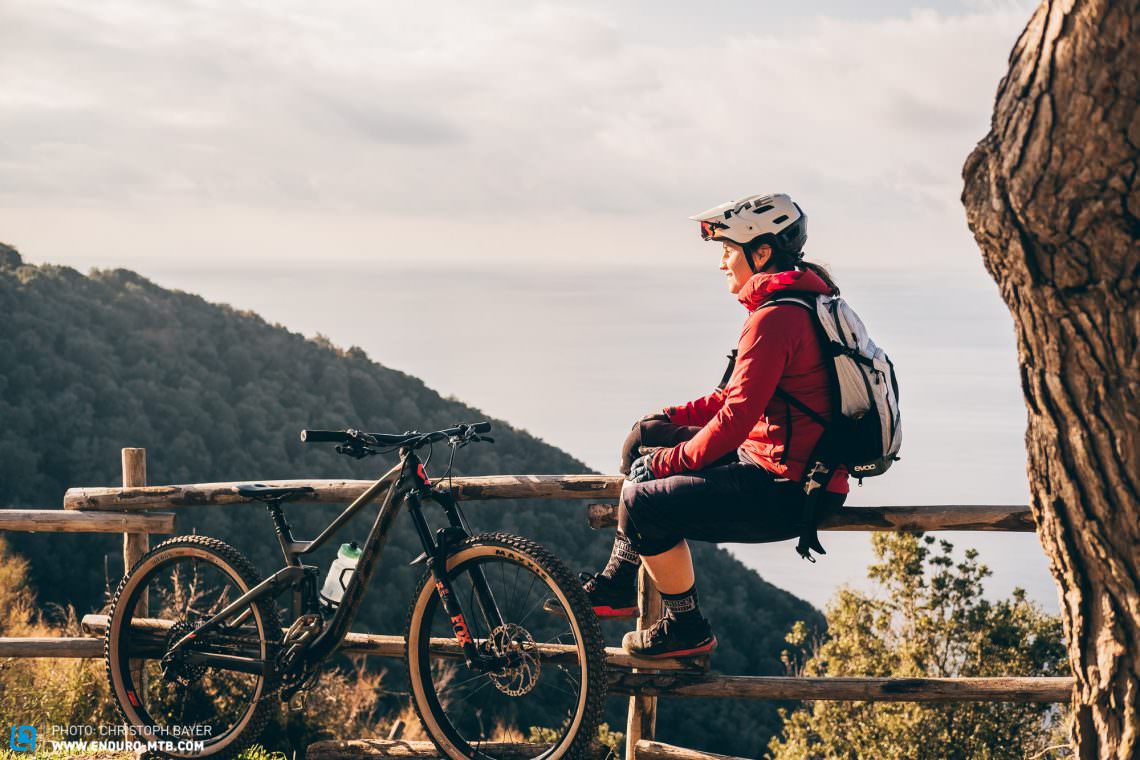
Catwalk vs. mud walk. How does the Contessa ride?
But enough facts! Isn’t it the catwalk that makes or breaks a successful modelling career? Let us put that in a bike context. Aren’t the best components totally irrelevant if the performance isn’t right? Starting our test session with the standard wheels and tires, the SCOTT Genius 710 Contessa provides a smooth ride right from the first climb. The riding position is nicely centred and feels comfortable. The Contessa accelerates nimbly and climbs incredibly well, which is mainly due to its low weight, the good rolling characteristics of the tires and handy TwinLoc system, which allows you to lock-out the fork and shock on the fly. On really steep climbs, we really loved the 30 tooth chainring – the Genius just climbs up anything!
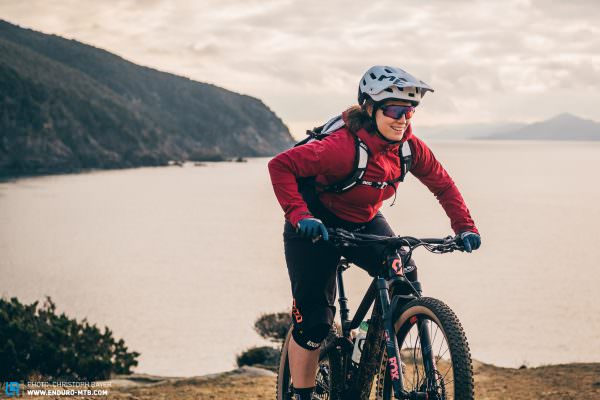
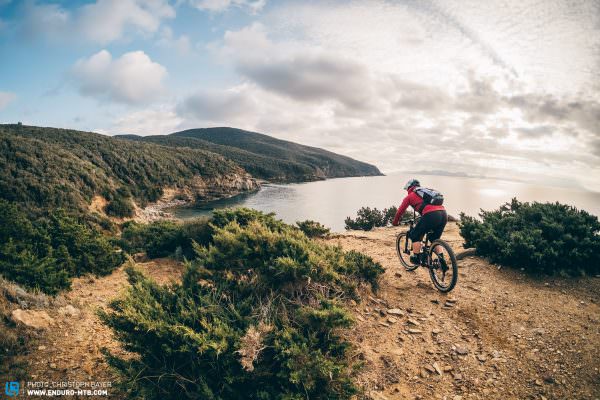
Now we know that the Contessa climbs really well. But how does it perform on the way down? Once you turn its nose back down into the valley, you feel well integrated between the wheels and the bike inspires tons of confidence. It’s playful yet composed and feels sure-footed in corners and through quick direction changes. On the whole, the Genius is incredibly good-natured and the suspension works sensitively whilst providing lots of pop. If you like jumping off ledges, the Genius Contessa might be a perfect choice. However, the standard spec strongly limits the potential of the Genius, with the main problem being the tires. With the low-profile tread and hard rubber-compound, these fail to provide the required grip and stability. Maxxis Rekons might be a good option on easy, flowy trails, but are definitely not on steep, wet and soft terrain. We’d also swap the handlebars for wider ones… many women will find the standard 740 mm bars too narrow.
Lose the high-heels, hit the trails – with a few adjustments the Genius becomes a great option for rough terrain!
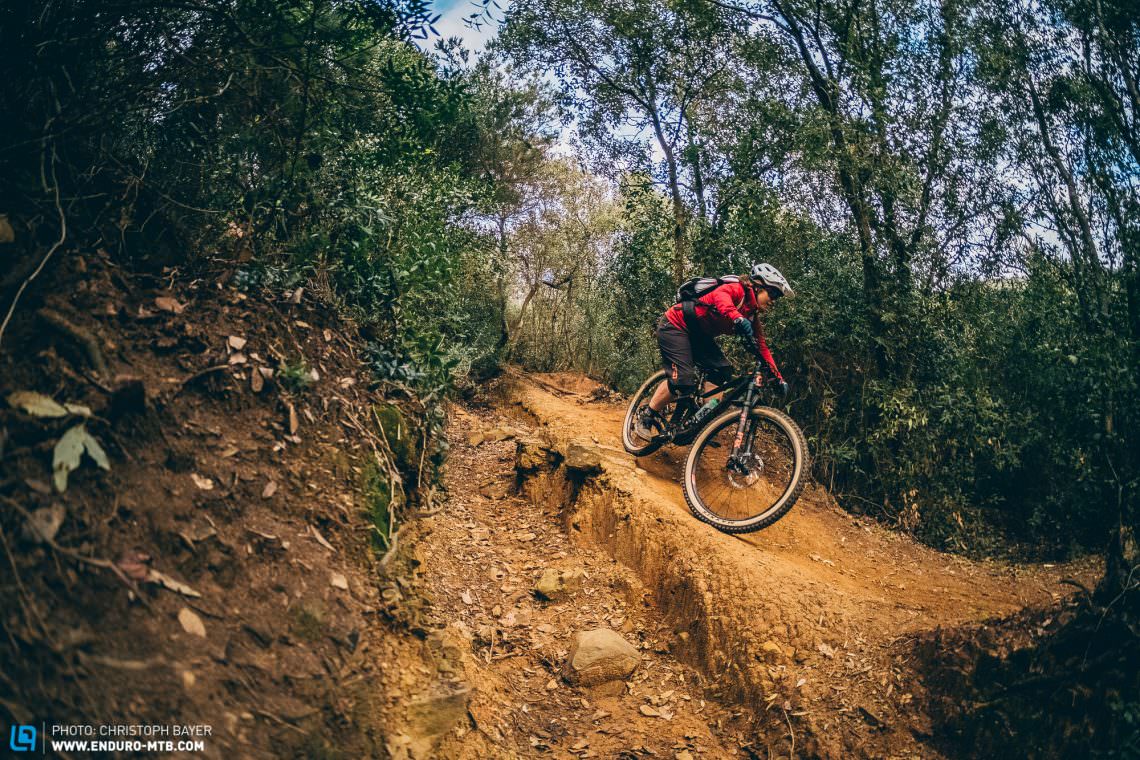
Dropper with more travel, if possible
An experiment – gifting the Contessa a new pair of shoes.
Since we weren’t fully satisfied with the standard tires, we decided to play around with different tire/wheel combos. First, we tried out some chunkier 2.4″ MAXXIS Minion DHR2s, which actually feature an even lower and slimmer profile than the original 2.8″ Rekons. This resulted in a significantly lower bottom bracket and caused the pedals to smash into rocks and roots, especially on technical climbs.
Next, we switched to 29″ wheels and moved the flip-chip into the lower setting. Our 160 cm test-rider found the setup with the big wheels a little overwhelming, both on technical climbs and downhills. In her opinion, the big wheels caused the bike to feel a lot more sluggish and required stronger steering inputs. On top of this, her butt kept rubbing against the rear-wheel on steep technical descents.
29” up front, 27.5” at the rear: Not only is this configuration causing a stir in the downhill-world but it is also our test rider’s favourite setup.
For our third setup we mixed up wheel sizes, using a 29″ at the front and a 27.5″ at the rear. This setup, which is currently causing a stir in the downhill-scene, turned out to be our rider’s favourite. Superb roll-over characteristics in the front, tons of grip and (still) very lively handling – in this configuration the Genius convinced us the most on the rough stuff. Despite the strong downhill orientation of this configuration, the Genius still climbs very efficiently.
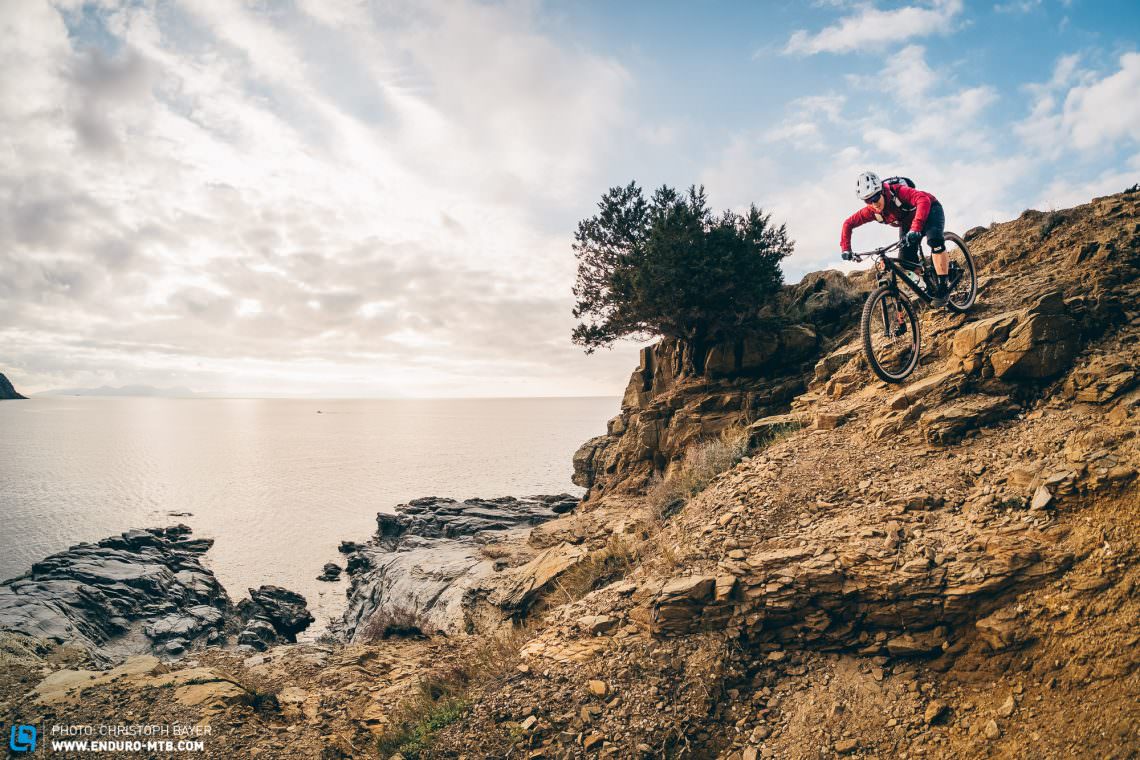
Conclusion
Not only is the SCOTT Genius Contessa 710 gorgeous, but also has the potential to perform well on all sorts of terrain. The TwinLoc system and high-quality frame make it a very good climber and a versatile platform. However, if your focus is on downhill performance, you’ll have to invest in a few upgrades.
Tops
- very efficient on climbs
- great look
- versatile frame with efficient and sensitive suspension
Flops
- the standard spec limits the downhill performance
For more information head to: scott-sports.com
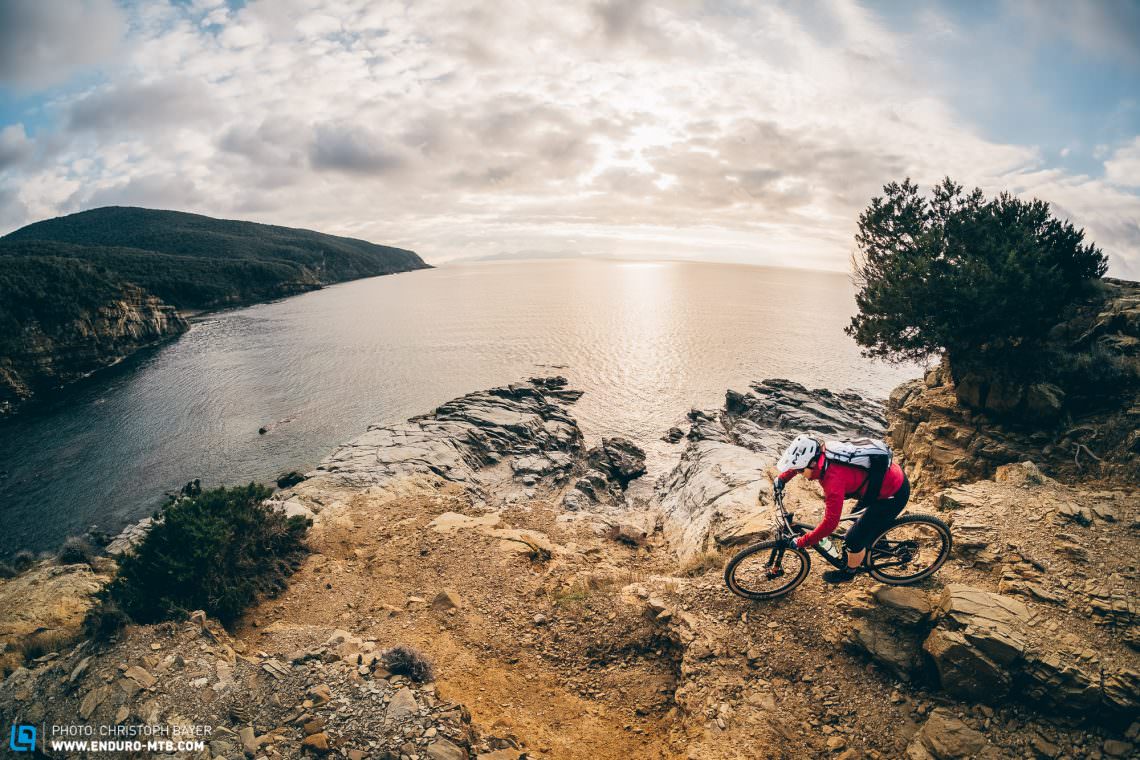
Did you enjoy this article? If so, we would be stoked if you decide to support us with a monthly contribution. By becoming a supporter of ENDURO, you will help secure a sustainable future for high-quality mountain bike journalism. Click here to learn more.
Words: Antonia Buckenlei Photos: Christoph Bayer




